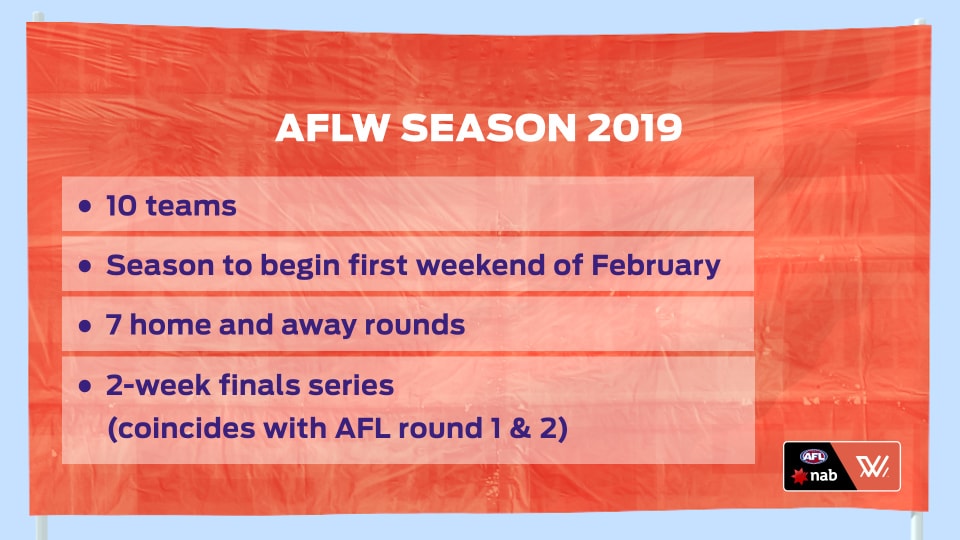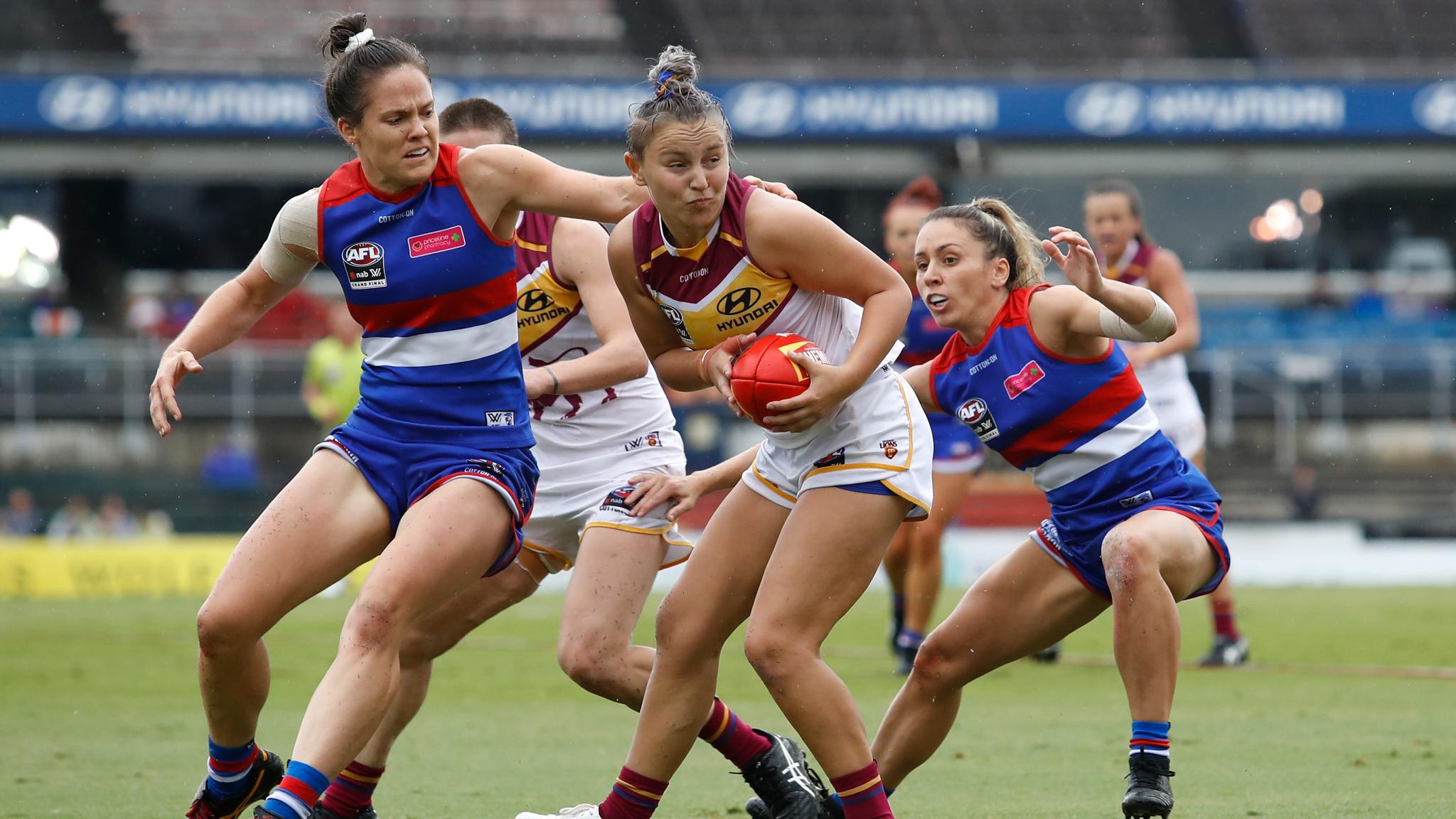THE AFL has confirmed the format for next year’s 10-team NAB AFL Women’s competition. Here’s a quick Q&A to help you navigate your way through the arrangement.
NEW SYSTEM League to adopt conferences for AFLW
Season start, finish and length?
The season will start on the first weekend of February, the same time the past two seasons have begun. The Grand Final will be held on the last weekend of March, overlapping with round two of the AFL season. It will run for nine weeks.
How many games will each team play?
Each team will play at least seven games, the same number as the past two seasons. The top two teams in each conference will play in a preliminary final, with the winner of each meeting in the Grand Final.
Wait, conferences?
Yes, conferences. In a move sure to spark discussion and debate, the 10 AFLW teams – Adelaide, Brisbane, Carlton, Collingwood, Fremantle, Geelong, Greater Western Sydney, Melbourne, North Melbourne and the Western Bulldogs – will be divided into two conferences.
Why conferences?
Conferences allow for a nine-week season, including finals, with the competition starting in February and with minimal overlap with the AFL season.
"Part of what we would like to do is continue with our growth, and growth can be deemed in different ways,” the AFL’s head of women’s football Nicole Livingstone said.
“We're looking to grow our fan base… and looking at the best period of time for that as well. We've got 60 more players this year (and) 120 more players in 2020, so it is growing very fast, just in a different way.”
How will the teams be divided?
The final division is yet to be determined, but there will be five teams in each conference. The final ladder positions for 2018 will form the basis of the conferences, with the Western Bulldogs and Brisbane – which finished first and second last year – in separate pools, while bottom-two sides Carlton and Fremantle will also be split. New teams Geelong and North Melbourne will also be in opposing conferences.
The conferences will be announced – along with the final fixture – in October. 
Five teams in each conference, and each team plays seven games. How does that work?
Teams will play every other team within their conference (four games), as well as three ‘crossover’ games. The crossover games will involve one top-two side (Bulldogs and Lions), one bottom-two side (Blues and Dockers) and room for one extra match, be that a close rival or clubs with recent history between them.
Based on the 2018 ladder, how could the teams be arranged?
Conference A – Western Bulldogs (1st), Melbourne (3rd), Adelaide (5th), Fremantle (7th) and one of Geelong/North Melbourne
Conference B – Brisbane (2nd), Greater Western Sydney (4th), Collingwood (6th), Carlton (8th) and one of Geelong/North Melbourne
These are not confirmed but simply examples of how the two conferences could look.
Reigning premiers the Western Bulldogs and runners up Brisbane will be in different conferences. Pictures: AFL Photos
Will Carlton and Collingwood open the season again?
The actual match details are yet to be determined, with the full fixture release scheduled for October. Only the season structure has been locked in.
Why has the season not been extended alongside the addition of Geelong and North Melbourne?
The season has been extended by one week with the inclusion of preliminary finals, but the decision was made not to start the season earlier (in the January school holiday period) because of the risk of low crowds and television ratings. Managing costs was also a significant factor in this decision, with the AFL paying for player wages and all operations (travel, accommodation, etc) associated with the national competition.
Will the matches be broadcast?
A broadcast deal is still being negotiated, but the AFL says progress has been made. An announcement is expected alongside the final fixture in October.
How will the finals work?
The top two teams from each conference will play off in preliminary finals on the opening weekend of the AFL season. The team that finishes first in conference A will take on the second-placed team in conference B, and vice-versa. The winners will meet in the Grand Final.
INCREDIBLE! @deannaberry07 you star! ⭐️ #AFLWGF pic.twitter.com/EAewGK4RC9
— AFL Women's (@aflwomens) March 24, 2018
What comes next on the AFLW calendar?
Clubs have until Friday, September 28 to sign rookies (players who have not played football in the three years prior to May 1).
The NAB AFLW Combine is on October 2-3 at Marvel Stadium at Docklands, with 36 players invited to take part in testing and interviews with clubs.
The NAB AFLW Draft will be held on October 23, also at Marvel Stadium, with Geelong holding the first two picks.
But I want to watch women's football now!
The AFLW might not be starting until February, but the VFLW finals start this weekend with Geelong, the Northern Territory Thunder, Hawthorn and Collingwood playing.
The AFL Sydney women's preliminary final between UNSW-ES Bulldogs (featuring Jacinda Barclay and Rebecca Privitelli) and Auburn-Penrith Giants (Renee Tomkins and Haneen Zrieka) is on Saturday, with the winner to play Macquarie University.
All other state leagues have finished for the year.

